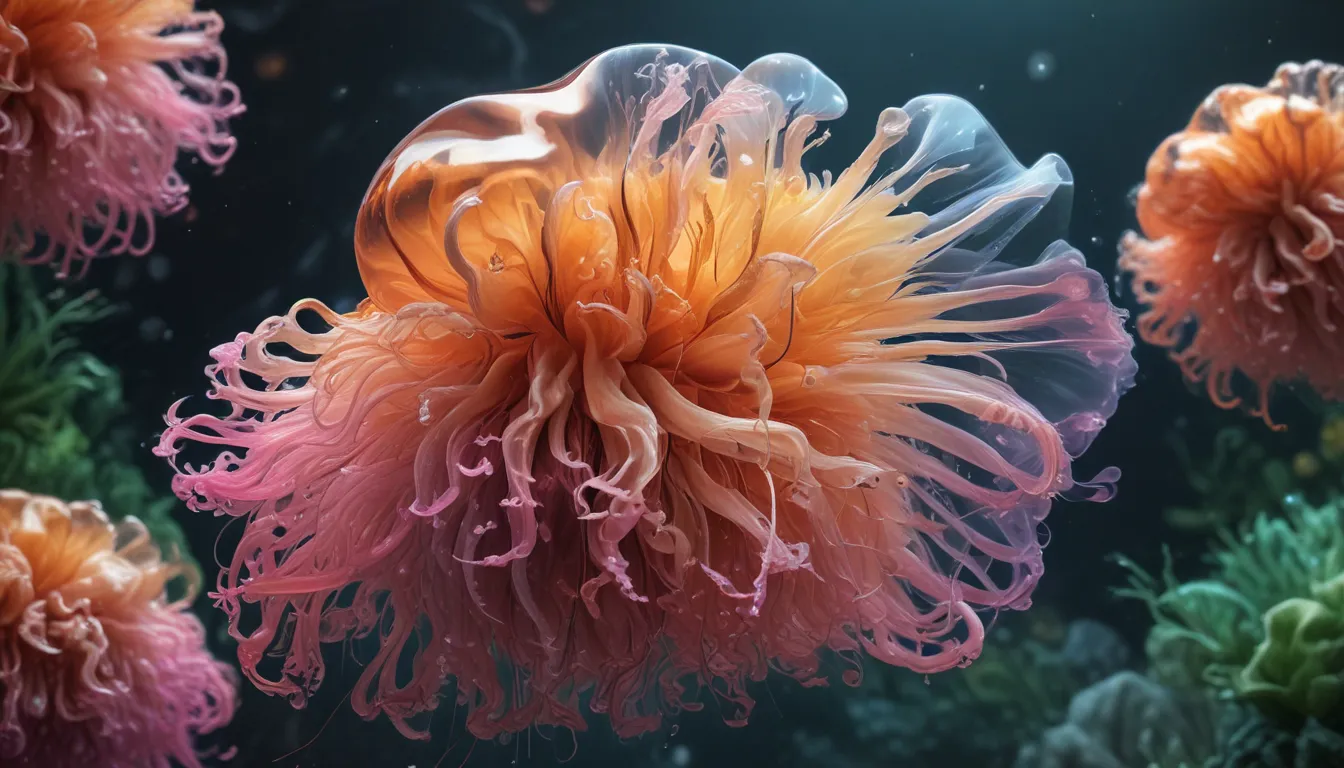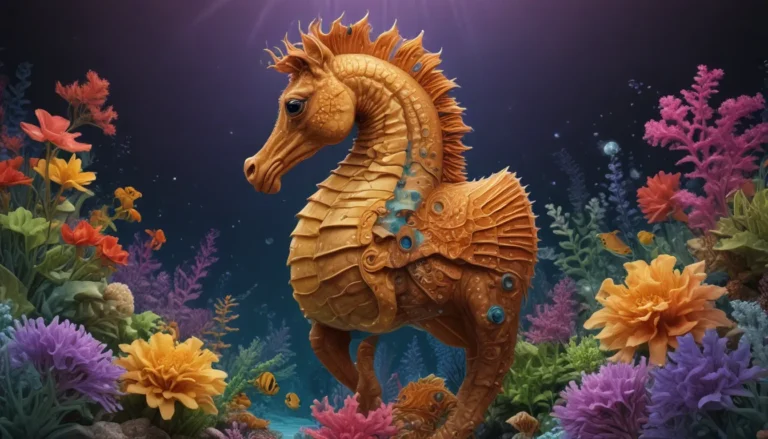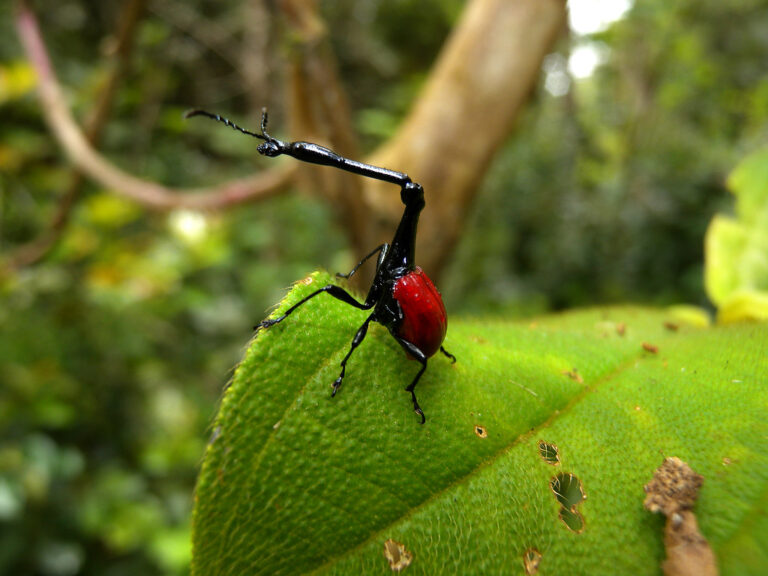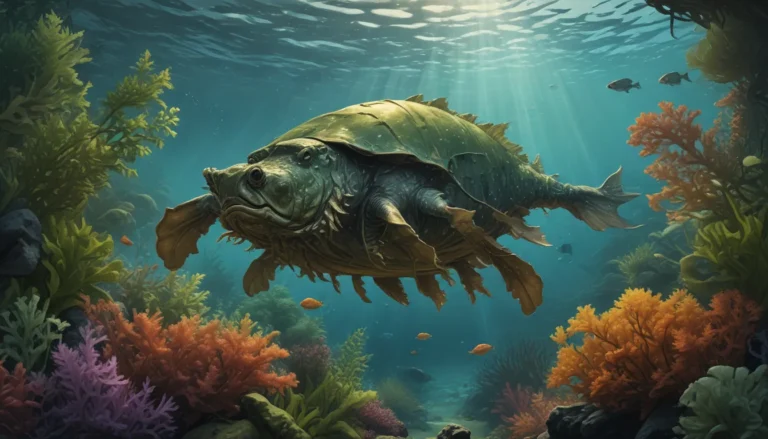The pictures we use in our articles might not show exactly what the words say. We choose these pictures to make you interested in reading more. The pictures work together with the words but don’t take their place. The words still tell you the important facts.
Welcome to the mesmerizing world of the lion mane jellyfish, a creature that captures the imagination with its stunning appearance and unique characteristics. In this article, we will delve into the depths of the ocean to uncover 18 fascinating facts about these captivating creatures. From their impressive size to their delicate nature, and from their fascinating feeding habits to their mesmerizing bioluminescence, get ready to be amazed by the wonders of the lion mane jellyfish.
Discovering the Majesty of Lion Mane Jellyfish
Lion Mane Jellyfish are the largest known jellyfish species, with a striking appearance that sets them apart from other marine creatures. Their vibrant colors and flowing tentacles make them a sight to behold, resembling a lion's mane, hence their name. Despite their venomous tentacles, these gentle giants contribute to the beauty and balance of the ocean, playing a vital role in controlling the population of other jellyfish species.
Unraveling the Mysteries of Lion Mane Jellyfish
- The Largest Known Jellyfish: The Lion Mane Jellyfish, scientifically known as Cyanea capillata, holds the title for being the largest jellyfish species in the world, with a bell diameter of up to 8 feet and tentacles that can extend over 100 feet.
- Striking Appearance: With their reddish-brown or yellowish-orange bell and trailing tentacles, Lion Mane Jellyfish are a breathtaking sight, captivating observers with their majestic presence.
- Ubiquitous Distribution: These jellyfish can be found in the cold waters of the Arctic, Atlantic, and Pacific Oceans, showcasing their adaptability to various regions of the world.
Unveiling the Secrets of Lion Mane Jellyfish
- Efficient Swimmers: Despite their large size, Lion Mane Jellyfish are remarkably agile swimmers, moving gracefully through the water by contracting and relaxing their bell-shaped bodies.
- Venomous Tentacles: The tentacles of the Lion Mane Jellyfish are equipped with thousands of stinging cells called nematocysts, which contain venom used to immobilize their prey.
- Prey and Diet: These jellyfish primarily feed on small fish, plankton, and other jellyfish, capturing their prey with their tentacles and bringing it towards their bell for consumption.
- Lifespan: The lifespan of a Lion Mane Jellyfish varies depending on environmental conditions, with an average lifespan of about one year in the wild.
Embracing the Harmony of Lion Mane Jellyfish
- Gentle Giants: Despite their venomous nature, Lion Mane Jellyfish are not a significant threat to humans, as their sting is usually not lethal but can cause discomfort and irritation.
- Population Control: Lion Mane Jellyfish play a crucial role in the marine ecosystem by controlling the population of other jellyfish species through their feeding habits, maintaining balance in the underwater world.
Embracing the Elegance of Lion Mane Jellyfish
During breeding season, female Lion Mane Jellyfish release their eggs into the water, which are then fertilized by male jellyfish. The fertilized eggs develop into larvae, eventually growing into adult jellyfish with unique adaptations to survive in their environment.
Exploring the Marvels of Lion Mane Jellyfish
- Unique Adaptations: Lion Mane Jellyfish have evolved several adaptations to thrive in their environment, including the ability to adjust their bell size for buoyancy and efficiently capture prey with their long, venomous tentacles.
- Research Potential: Scientists study Lion Mane Jellyfish to gain insights into marine organism adaptations, ecological impact, and potential medical research applications, such as regenerative cell properties.
Encountering the Majesty of Lion Mane Jellyfish
Although encounters with Lion Mane Jellyfish are not common near shorelines, beachgoers have occasionally encountered these majestic creatures. It is essential to exercise caution and seek medical attention if stung to avoid discomfort and potential allergic reactions.
Experiencing the Splendor of Lion Mane Jellyfish
Under specific conditions, Lion Mane Jellyfish exhibit bioluminescent properties, emitting a mesmerizing glow that adds to their beauty and allure. However, these fascinating creatures are vulnerable to environmental changes caused by climate change, pollution, and overfishing, highlighting the need for conservation efforts to protect their existence.
Preserving the Splendor of Lion Mane Jellyfish
In areas where Lion Mane Jellyfish are abundant, they have become prime tourist attractions, attracting visitors who wish to witness these mesmerizing creatures up close while snorkeling or diving. Their impact on the marine ecosystem is significant, regulating prey populations, influencing nutrient cycling, and providing food for other predators in the food chain.
Celebrating the Natural Beauty of Lion Mane Jellyfish
Symbolizing the wonders of marine life, Lion Mane Jellyfish are not only fascinating to study but also an exquisite example of the breathtaking beauty that exists in the depths of the world's oceans. Their presence serves as a reminder of the diverse marine life and the importance of conserving fragile ecosystems for future generations to enjoy.
Embracing the Magnificence of Lion Mane Jellyfish
In conclusion, the lion's mane jellyfish is a majestic creature that continues to captivate scientists and nature enthusiasts with its unique characteristics. By learning about these fascinating creatures and appreciating their role in the marine ecosystem, we gain a deeper understanding of the importance of protecting our oceans and preserving the delicate balance of underwater life.
FAQs
Q: What is the size of a lion's mane jellyfish?
A: Lion's mane jellyfish can grow to be the largest jellyfish species, with tentacles reaching up to 120 feet long and a bell diameter of up to 8 feet.
Q: Where are lion's mane jellyfish found?
A: They are primarily found in the cold waters of the Northern Atlantic Ocean, including regions such as the Arctic, North Atlantic, and North Pacific.
Q: Are lion's mane jellyfish dangerous to humans?
A: Yes, lion's mane jellyfish possess venomous tentacles that can deliver painful stings. While their sting is rarely life-threatening, it can cause discomfort, allergic reactions, and in some cases, breathing difficulties.
Q: What do lion's mane jellyfish eat?
A: Lion's mane jellyfish feed primarily on small fish, plankton, and other jellyfish. They use their numerous tentacles to capture their prey and bring it towards their mouth located in the center of their translucent bell.
Q: Can lion's mane jellyfish be kept as pets?
A: No, lion's mane jellyfish are not suitable for home aquariums. They require specific conditions and constant maintenance to survive, making them challenging to care for outside of their natural habitat.






